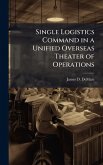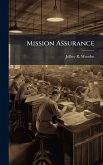The purpose of this study is to determine the suitability of using an evolutionary acquisition strategy in joint acquisition programs for command and control systems. The policies of the Office of the Secretary of Defense and of the Joint Logistics Commanders support the use of an evolutionary acquisition strategy in acquiring command and control systems. At the same time, these policies note that the unique circumstances of individual programs should be considered. This study examines the unique circumstances of joint acquisition programs and relates these circumstances to the evolutionary acquisition of command and control systems. This study has two conclusions. First, the Packard Commission's criterion -- an informed trade-off between user requirements, on the one hand, and schedule and-cost on the other -- is (of several sets of criteria presented) the only one upon which to base a decision on the research question. Second, on the research question itself -- the suitability of using an evolutionary acquisition strategy in joint acquisition programs for command and control systems -- based on the Packard Commission's criterion, the conclusion is: No, an evolutionary acquisition strategy is not suitable to use in joint acquisition programs for command and control systems. This study has two recommendations. First, the policies relative to evolutionary acquisition and the policies relative to joint acquisition must consider the effects of each. That is, any evolutionary acquisition policy must consider the unique challenges faced by a joint acquisition program; and the corollary -- any joint acquisition policy affecting command and control systems must consider the special attributes of these systems. Second, since the rules for an evolutionary approach do not accommodate the day-to-day realities of program management, further study must focus on how to make the accommodation happen. This work has been selected by scholars as being culturally important, and is part of the knowledge base of civilization as we know it. This work was reproduced from the original artifact, and remains as true to the original work as possible. Therefore, you will see the original copyright references, library stamps (as most of these works have been housed in our most important libraries around the world), and other notations in the work. This work is in the public domain in the United States of America, and possibly other nations. Within the United States, you may freely copy and distribute this work, as no entity (individual or corporate) has a copyright on the body of the work. As a reproduction of a historical artifact, this work may contain missing or blurred pages, poor pictures, errant marks, etc. Scholars believe, and we concur, that this work is important enough to be preserved, reproduced, and made generally available to the public. We appreciate your support of the preservation process, and thank you for being an important part of keeping this knowledge alive and relevant.
Bitte wählen Sie Ihr Anliegen aus.
Rechnungen
Retourenschein anfordern
Bestellstatus
Storno








